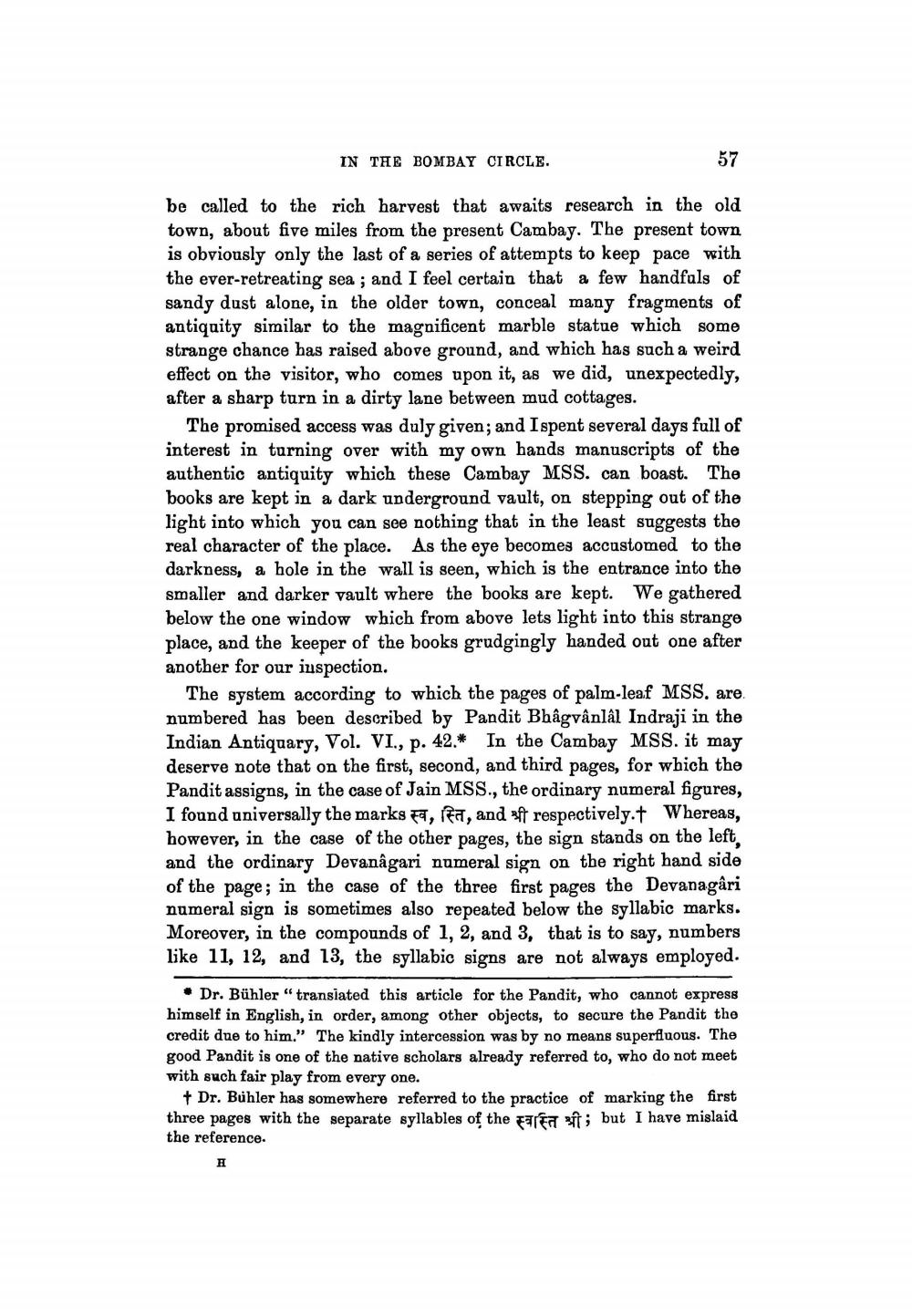________________
IN THE BOMBAY CIRCLE.
57
be called to the rich harvest that awaits research in the old town, about five miles from the present Cambay. The present town is obviously only the last of a series of attempts to keep pace with the ever-retreating sea ; and I feel certain that a few handfuls of sandy dust alone, in the older town, conceal many fragments of antiquity similar to the magnificent marble statue which some strange chance has raised above ground, and which has such a weird effect on the visitor, who comes upon it, as we did, unexpectedly, after a sharp turn in a dirty lane between mud cottages.
The promised access was duly given; and I spent several days full of interest in turning over with my own hands manuscripts of the authentic antiquity which these Cambay MSS. can boast. The books are kept in a dark underground vault, on stepping out of the light into which you can see nothing that in the least suggests the real character of the place. As the eye becomes accustomed to the darkness, a hole in the wall is seen, which is the entrance into the smaller and darker vault where the books are kept. We gathered below the one window which from above lets light into this strange place, and the keeper of the books grudgingly handed out one after another for our inspection.
The system according to which the pages of palm-leaf MSS. are. numbered has been described by Pandit Bhagvânlâl Indraji in the Indian Antiquary, Vol. VI., p. 42.* In the Cambay MSS. it may deserve note that on the first, second, and third pages, for which the Pandit assigns, in the case of Jain MSS., the ordinary numeral figures, I found universally the marks Fa, ffa, and xff respectively.t Whereas, however, in the case of the other pages, the sign stands on the left, and the ordinary Devanagari numeral sign on the right hand side of the page; in the case of the three first pages the Devanagari numeral sign is sometimes also repeated below the syllabic marks. Moreover, in the compounds of 1, 2, and 3, that is to say, numbers like 11, 12, and 13, the syllabic signs are not always employed.
• Dr. Bühler "transiated this article for the Pandit, who cannot express himself in English, in order, among other objects, to secure the Pandit the credit due to him." The kindly intercession was by no means superfluous. The good Pandit is one of the native scholars already referred to, who do not meet with such fair play from every one.
+ Dr. Buhler has somewhere referred to the practice of marking the first three pages with the separate syllables of the Fren ft; but I have mislaid the reference.




